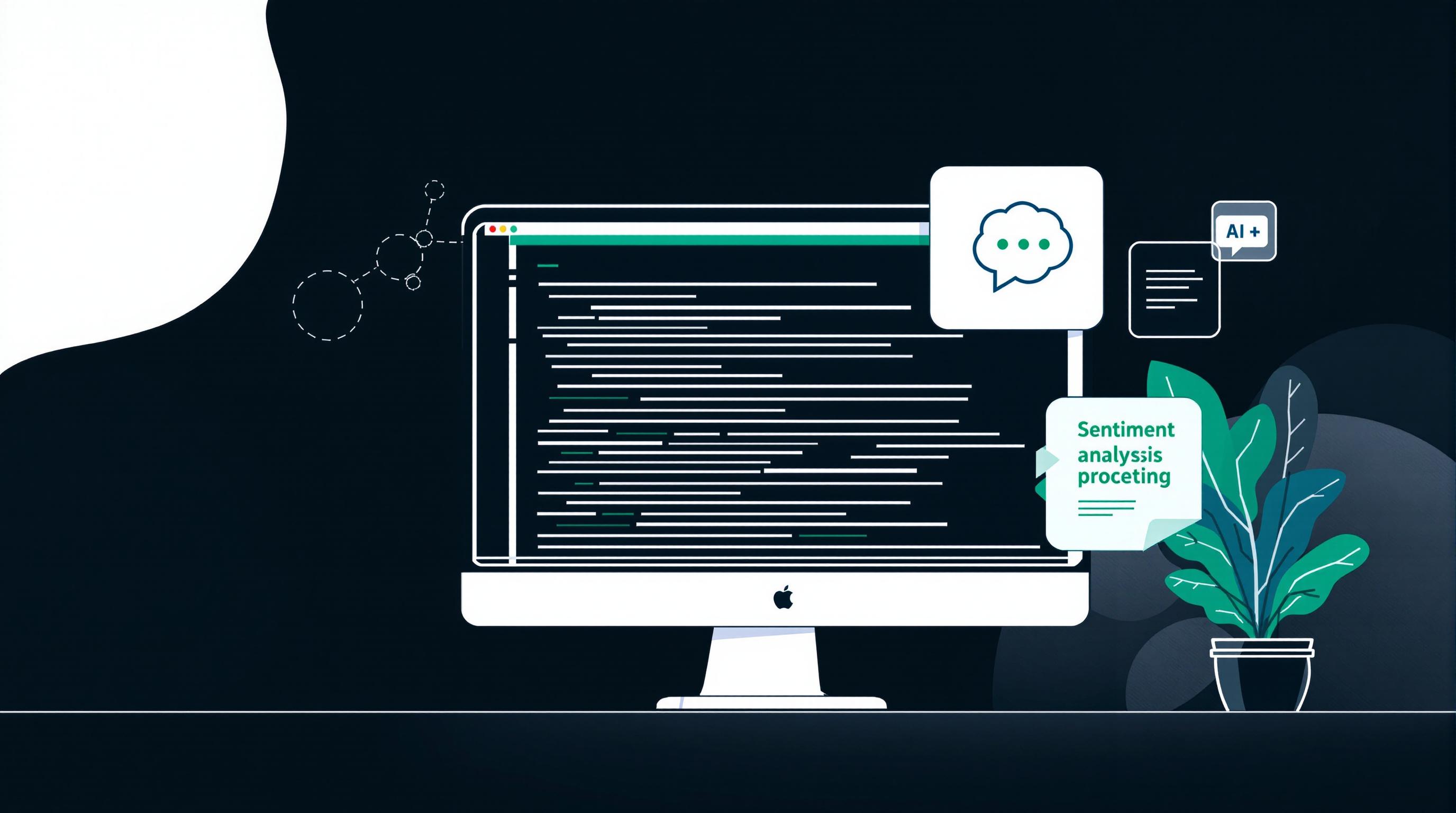AI is transforming web scraping by solving common challenges like dynamic content, CAPTCHAs, and rate limits. Traditional methods often fail due to modern website defenses, but AI-powered tools adapt in real time, making scraping more reliable. Here's how AI improves error handling:
- Predict Errors: AI analyzes past issues to prevent failures.
- Bypass CAPTCHAs: Uses machine learning for automated CAPTCHA solving.
- Handle Dynamic Content: Mimics human browsing to load JavaScript-based data.
- Smart Proxy Management: Adjusts IP rotation and request patterns dynamically.
Quick Overview of AI Benefits in Scraping
| Feature | AI Advantage |
|---|---|
| Error Prediction | Prevents failures proactively |
| CAPTCHA Handling | Solves challenges automatically |
| Dynamic Content Loading | Executes JavaScript like a browser |
| Proxy Management | Optimizes IP usage in real time |
AI tools like ScraperAPI and InstantAPI.ai simplify scraping by automating these tasks, reducing errors by up to 90%. Businesses can now collect data efficiently while navigating modern website defenses.
Python AI Web Scraper Tutorial - Use AI To Scrape ANYTHING
Challenges in Web Scraping
Common Web Scraping Issues
Web scraping often runs into technical roadblocks that disrupt data collection. For instance, HTTP errors like 403 Forbidden or 504 Gateway Timeout can occur when scrapers hit rate limits or trigger anti-bot systems.
Another major issue is dynamic content. Many modern websites rely on JavaScript to load important data, which renders traditional HTML scraping methods ineffective. On top of that, CAPTCHAs act as barriers, designed to differentiate between bots and human users, requiring advanced techniques to bypass.
Rate limiting is another obstacle. Websites often enforce strict limits on requests to safeguard their servers from high traffic. If scrapers exceed these limits, they can face temporary IP blocks or even permanent bans. To avoid this, careful request pacing and IP rotation are crucial.
Challenges with Modern Website Design
Today’s websites are built with complex, JavaScript-heavy frameworks that dynamically load content. This shift means scrapers must go beyond simple HTML parsing to handle these intricacies.
| Website Feature | Challenge |
|---|---|
| Dynamic Loading | Content only appears after JavaScript runs |
| Anti-Bot Systems | Advanced detection and blocking mechanisms |
| Session Management | Requires precise handling of authentication |
| Rate Limiting | Enforces strict request thresholds |
Take e-commerce platforms like Amazon as an example. These sites deploy multiple layers of defense, including:
- Behavioral analysis to detect bots
- IP reputation tracking
- Session validation systems
- Monitoring of request patterns
In addition to technical challenges, scrapers must also navigate legal and ethical considerations, such as complying with terms of service and respecting robots.txt directives. These factors make traditional scraping methods less effective, pushing the need for smarter solutions.
As these challenges grow more complex, AI-driven tools have become crucial for overcoming errors and adapting to evolving web technologies.
sbb-itb-f2fbbd7
AI Strategies for Error Management
AI Error Detection and Prediction
AI-driven scraping tools use machine learning models to spot and address potential scraping issues before they happen. By analyzing past scraping logs, these tools can pinpoint weak spots and take action to prevent failures.
ScraperAPI enhances its proxy management by adjusting to specific website behaviors. Its AI selects proxies in real-time, factoring in success rates and site-specific patterns.
InstantAPI.ai eliminates the need for manual xpath updates and fixes for broken selectors. Their AI automatically adjusts to changes in website structures, ensuring smooth data extraction even when target sites are updated.
While predictive AI reduces many errors, tackling CAPTCHAs requires more advanced AI techniques.
AI Solutions for CAPTCHA Bypass
AI handles CAPTCHAs by leveraging deep learning models trained on diverse datasets. Depending on the CAPTCHA type, these systems use tailored approaches:
| CAPTCHA Type | AI Solution Approach |
|---|---|
| Text-based | OCR combined with Neural Networks |
| Image Selection | Computer Vision with Classification |
| Puzzle-based | Pattern Recognition and Simulation |
Beyond CAPTCHAs, AI also tackles challenges like JavaScript-heavy websites and dynamic content.
AI Handling of Dynamic Content
JavaScript-heavy websites often pose problems for traditional scrapers, but AI-based solutions have found ways to manage dynamic content loading. These systems use browser automation to mimic human browsing behavior.
InstantAPI.ai's JavaScript rendering system takes care of dynamic content loading automatically. It processes JavaScript execution in a way that mirrors how real browsers behave, helping to avoid anti-bot detection.
"AI web scraping tools can handle errors because of their learning capabilities", a recent Multilogin Blog post explains, emphasizing how machine learning models adapt to varying website structures and loading behaviors.
AI's success in managing dynamic content relies on its ability to:
- Detect loading patterns and execute JavaScript naturally
- Adjust timing to handle asynchronous updates effectively
Implementing AI in Error Management
Using AI-Powered Scraping Tools
AI-powered scraping tools simplify error handling by automating complex tasks. Features like automated XPath updates, proxy rotation, and JavaScript rendering minimize common scraping issues - reducing errors by up to 90% in enterprise setups. For instance, InstantAPI.ai focuses on automating selector maintenance, while other tools tackle specific challenges like proxy management or rate limiting.
Although these tools provide ready-to-use solutions, developers who need more flexibility can integrate AI APIs and libraries to build tailored systems.
Using AI APIs and Libraries
AI APIs and libraries offer developers the flexibility to create custom error-handling systems. Here’s a quick look at how different components can be used:
| Component | Purpose | Example Use Case |
|---|---|---|
| ScraperAPI | Proxy Management | Automatic IP rotation with exponential backoff |
| TensorFlow | Pattern Recognition | Training neural networks to solve CAPTCHA tasks |
| PyTorch | Error Prediction | Analyzing past scraping patterns to prevent issues |
By combining these tools, developers can build systems that handle errors effectively. For example, platforms like ScrapeStorm and Octoparse use intelligent detection to maintain consistent data structures, even as websites change.
Customizing AI Error Management
Customizing error management strategies ensures they align with specific challenges posed by different websites. Tools like ScrapingBee allow developers to adapt to various architectures with their flexible JavaScript rendering capabilities.
To enhance AI-driven error management, consider these strategies:
- Adjust request patterns: Fine-tune timing and frequency to align with anti-bot measures.
- Use smart retries: Implement exponential backoff for retries, guided by AI.
- Track success rates: Continuously monitor and refine strategies in real time.
Platforms like InstantAPI.ai also offer customization options, allowing users to tweak scraping parameters across pricing tiers while ensuring reliable data extraction with AI-powered error handling.
Improving Web Scraping with AI
Key Points
AI has reshaped web scraping by making it more reliable and efficient. Research indicates that AI-driven data extraction methods can cut operational time by 30-40%. These tools excel at tackling tough challenges like dynamic content, CAPTCHAs, and even predicting potential errors before they occur.
By using machine learning and automation, AI solutions address issues like dynamic content loading and anti-bot defenses. They adapt to shifting website structures while keeping data extraction accurate and consistent.
Here are some practical ways to incorporate AI into your web scraping processes:
Recommendations
- Use AI-Powered Tools: Pick tools that include features like automatic updates, JavaScript rendering, and smart proxy management to ensure smooth data extraction.
- Adopt Predictive Error Handling: Combine predictive analysis with resource optimization to speed up and improve accuracy. AI tools can handle multiple tasks at once without sacrificing precision.
- Prioritize Scalability: Choose solutions that are low-maintenance but equipped with strong error-handling capabilities.
"Once AI web scraping tools came onto the market, I could complete tasks much faster and on a larger scale." - William Orgertrice, Data Engineer at Tuff City Records
As web technologies continue to evolve, AI plays a crucial role in making web scraping scalable and efficient. These strategies can help businesses create reliable scraping systems that keep up with the constantly changing digital environment.


